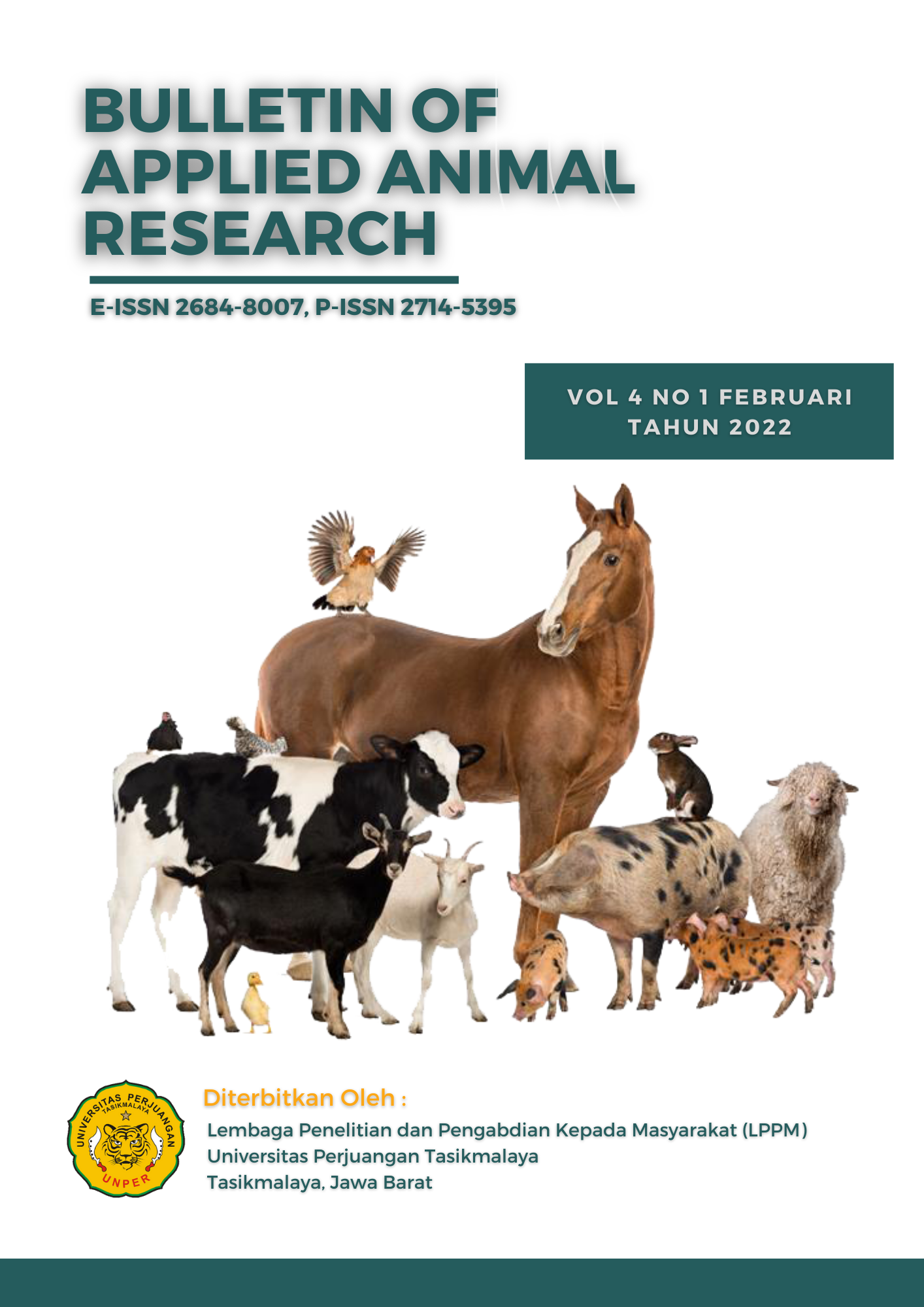Crude Protein and Crude Fat of Ammonia Fermented (Amofer) Corn Cob Using Different Levels of M21 Decomposer and Urea
DOI:
https://doi.org/10.36423/baar.v4i1.928Abstract
Utilization of agricultural waste in the form of corn cobs in order to overcome the problem of availability of ruminant feed. Utilization of corn cobs as feed is still very minimal due to protein content, low digestibility and high lignin content, so it needs to be processed first. One method of processing corn cobs is using the ammonia fermentation method (amofer).
The purpose of this study was to evaluate the use of M21 decomposer and urea on the protein and crude fat content of ammonia fermented corn cob. This research was carried out using an experimental method with a completely randomized design . The treatments in this study were the addition of M21 decomposer and urea (0 ; 0.04:3 ; 0.06:3 ; 0.04:5 ; 0.06:5 of the total formula solution). The variables observed were crude protein and fat.
The results showed that the M21 decomposer and urea treatment had a very significant effect (P < 0.01) on the increase in crude protein, namely in the R4 treatment (amofer corn cobs with the addition of 0.06% M21 decomposer and urea 5 %) which is 6.19 ± 0.07%. And in the crude fat test, the results obtained a effect significant(P < 0.05), thehighest crude fat content was obtained in the R2 treatment (diamofer corn cob with the addition of 0.06% M21 decomposer and 3% urea) which was 6.11 ± 0.09 and the lowest was at R4 treatment (amofer corn cob with the addition of M21 decomposer 0.06% and 5% urea) was 3.26 ± 0.04.
Keywords: Amofer, Corn Cob, M21 Decomposer












